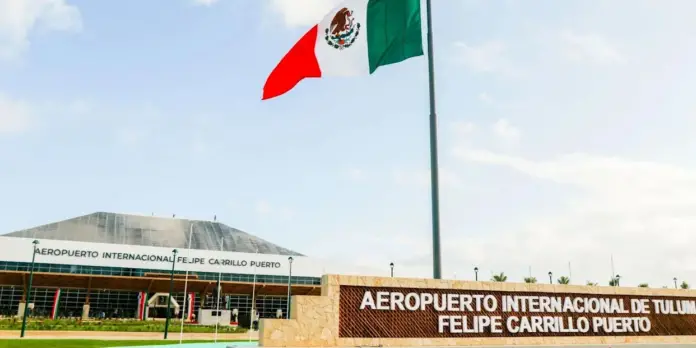Felipe Carrillo Puerto International Airport in Tulum (TQO) is facing a reconfiguration of its international connectivity. Air Canada recently announced a significant reduction in its operations to this popular destination in the Mexican Caribbean for the 2025-2026 winter season due to lower-than-expected demand. The decision includes the cancellation of routes and a reduction in frequencies on several of its routes from Canada.
The Canadian airline confirmed that it will eliminate flights from Ottawa (YOW) and Quebec (YQB), routes that had been inaugurated after the opening of the new airport in December 2023. Additionally, it will reduce frequencies from Montreal, which will go from five to three flights per week. Only the route from Toronto (YYZ) will remain unchanged, with four weekly frequencies to Tulum.
“The airline industry over-invested in Tulum, and now we are seeing airlines beginning to adjust supply,” explained Mark Galardo, Executive Vice President of Air Canada, during the presentation of its first-quarter financial results. “There’s a lot of fat in that market,” he added, indicating that the company’s strategy will focus on Cancún, a destination that offers greater profitability.
TULUM SHRINKS: OTHER AIRLINES RETRACTING
Air Canada’s decision is not isolated. United Airlines has also reduced its presence in Tulum, canceling its route from Boston (BOS) and halting plans to open a connection to Denver (DEN). Likewise, Copa Airlines (Panama) and Avianca (Colombia) suspended operations to TQO this year, consolidating a trend of widespread re-evaluation of the potential of this new airport.
In contrast, fellow Canadian airline WestJet will maintain operations for the winter of 2025-2026 with a more conservative approach: two weekly flights from Toronto and one from Calgary, routes that began operating in November 2024.
Avianca, for its part, officially announced the suspension of its direct route between Bogotá (BOG) and Tulum, which will cease operations on July 3, 2025. The route, launched in December 2024, offered three weekly flights with Airbus A320 aircraft for 180 passengers, representing more than 1,000 weekly seats to the Mexican Caribbean.
The Colombian airline explained that the measure is part of its route adjustment policy based on actual market demand. “Passengers with tickets after the suspension date will be relocated via Cancún,” Avianca stated, while reiterating its commitment to maintaining connectivity from Mexico to Colombia, with flights from Mexico City and Cancún to Bogotá and Medellín.
GUADALAJARA: AIR CANADA’S NEW COMMITMENT
As part of its route restructuring, Air Canada also announced the expansion of service to Guadalajara (GDL), highlighting its high local demand and potential as an international connection point.
“We are very excited about Guadalajara,” said Galardo, emphasizing that this route aligns with the airline’s global strategy of strengthening destinations with greater stability and commercial opportunities.
TULUM AIRPORT: INFLATED EXPECTATIONS?
The reduction in flights to Tulum reflects a natural market adjustment to air capacity that may have been overstated following the airport’s inauguration.
Tulum currently offers scheduled domestic flights to the airports of Monterrey, Guadalajara, and Santa Lucía in the State of Mexico. For international flights, the Bogotá airport remains in effect until July, as well as to Houston, Dallas, Atlanta, New York (Newark), and Miami. Of the national airlines, all operate from the AIFA in the State of Mexico: Mexicana, Aeroméxico, and Viva. The current international airlines are United, Delta Airlines, and the latest operations are Avianca.
Less than two years after its opening, multiple international airlines have had to reevaluate their presence, redirecting operations to traditional hubs like Cancún, which continues to concentrate the majority of international tourist traffic to the Riviera Maya.

Source: es-us.noticias.yahoo




